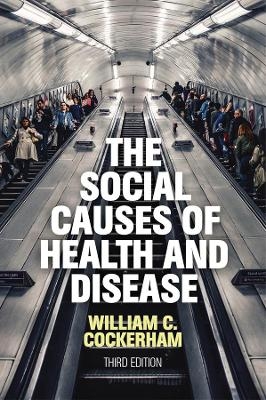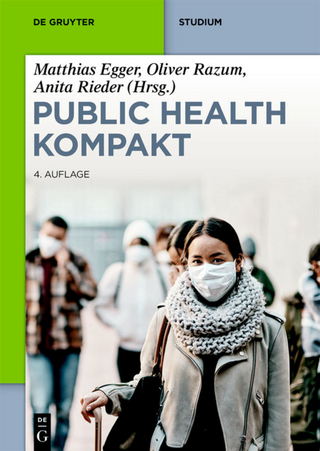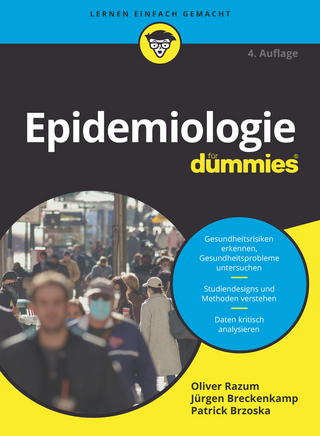
The Social Causes of Health and Disease
Polity Press (Verlag)
978-1-5095-4035-8 (ISBN)
The book continues to build on the paradigm shift that has been emerging in twenty-first-century medical sociology, which looks beyond individual explanations for health and disease. As the field has headed toward a fundamentally different orientation, William Cockerham’s work has been at the forefront of these changes, and he here marshals evidence and theory for those seeking a clear and authoritative guide to the realities of the social determinants of health. Of particular note in the latest edition is new material on the relationship between gender and health, implications of the life course for health behavior, the health effects of social capital, and the emergence of COVID-19.
This engaging introduction to social epidemiology will be indispensable reading for all students and scholars of medical sociology, especially those with the courage to confront the possibility that society really does make people sick.
William C. Cockerham is Distinguished Professor of Sociology and Chair Emeritus at the University of Alabama at Birmingham, and Research Scholar of Sociology at the College of William & Mary in Virginia.
Preface 1 The Social Causation of Health and Disease
Coronavirus
Smoking
The Biomedical Model
Elements of Proof
Diabetes
HIV/AIDS
Social Determinants of Disease: Fundamental Cause Theory
Measuring Structural Effects
Conclusion
Critical Thinking Questions
Suggested Further Reading
2 Theorizing about Health and Disease
The Rise and Fall of Structural-Functionalism
The Fall of Conflict Theory and Repackaging of Marxism
The Rise of the Agency-Oriented Paradigm
American Medical Sociology
British Medical Sociology
Conclusion
Critical Thinking Questions
Suggested Further Reading
3 Health Lifestyles
Lifestyle: Health as an Achievement
Methodological Individualism in Health Lifestyle Research
The Agency–Structure Debate
Health Lifestyle Theory
Class circumstances
Age, gender, and race/ethnicity
Collectivities
Living conditions
Socialization and experience
Life choices (agency)
Life chances (structure)
Choice and chance interplay
Dispositions to act (habitus)
Completing the model
Conclusion
Critical Thinking Questions
Suggested Further Reading
4 The Power of Class
Class and Heart Attack Survival
Class Structure and its Components
Class schemes
Weber: status groups
The End of Class?
The Social Gradient in Mortality
Confirming the Relationship
Medical Care as an Intervening Variable?
Conclusion
Critical Thinking Questions
Suggested Further Reading
5 Class and Health: Explaining the Relationship
Class, Health, and Medical Care in the United States
Class, Health, and Medical Care in the United Kingdom
Stress
Income Inequality
Culture
Smoking
Obesity
Conclusion: Social Causation or Social Selection?
Critical Thinking Questions
Suggested Further Reading
6 Age
Age Stratification Theory
Life Course Theory
Cohort Effects of Age
Conclusion
Critical Thinking Questions
Suggested Further Reading
7 Gender
The Gender Health and Mortality Paradox
Gender Differences in Physical and Mental Health
Gender Differences in Health Practices
LGBT Health
Another Look at Smoking
Conclusion
Critical Thinking Questions
Suggested Further Reading
8 Race and Ethnicity
Ethnicity
Race and Physical Health
Hispanics and Immigration
Racism as a Fundamental Cause
Race and Health in Britain
Race and Mental Health
Summary
Critical Thinking Questions
Suggested Further Reading
9 Living Conditions and Neighborhood Disadvantage
Unhealthy Places
Health and Neighborhood Disadvantage in Britain
Physical Health and Neighborhood Disadvantage in the US
Mental Health and Neighborhood Disadvantage in the US
Conclusion
Critical Thinking Questions
Suggested Further Reading
10 Health and Social Capital
Robert Putnam: Bowling Alone
Nan Lin: Social Capital as Structure
Pierre Bourdieu: A Social Form of Capital
Robert Sampson: Collective Efficacy
Research Applications of Social Capital
Conclusion
Critical Thinking Questions
Suggested Further Reading
Concluding Remarks
The Return of Structure
Structure–Agency Interface
Policy Implications
Conclusion
References
Name Index
Subject Index
| Erscheinungsdatum | 17.11.2020 |
|---|---|
| Verlagsort | Oxford |
| Sprache | englisch |
| Maße | 152 x 229 mm |
| Gewicht | 567 g |
| Themenwelt | Studium ► Querschnittsbereiche ► Epidemiologie / Med. Biometrie |
| Sozialwissenschaften ► Soziologie | |
| ISBN-10 | 1-5095-4035-0 / 1509540350 |
| ISBN-13 | 978-1-5095-4035-8 / 9781509540358 |
| Zustand | Neuware |
| Informationen gemäß Produktsicherheitsverordnung (GPSR) | |
| Haben Sie eine Frage zum Produkt? |
aus dem Bereich


